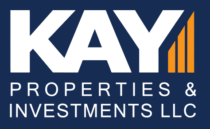At Kay Properties, we are very focused on reducing risk wherever possible. We all know that all real estate investments contain the risk of a loss of investment capital and that cash flow and appreciation are not guaranteed.
One of the ways that we can help to reduce risk for our clients is by rejecting the higher risk asset classes in the DST marketplace; asset classes like student housing, oil and gas, hotels and senior care.
One of the interesting things about the senior care asset class is that it does have an amazing story that makes sense when observed with an untrained eye. The baby boomers are the largest demographic in American history and they are creating a rise in demand for senior care properties each and every year. Pretty attractive, right? Everybody can understand the logic behind this increased demand and to many it seems like a perfect investment.
The problem that those selling senior care properties fail to mention is the heightened risk of senior care properties.
Senior care properties often trade at higher capitalization (cap) rates as compared to other commercial real estate asset classes due to the market’s greater perceived risk of senior care properties.
These higher cap rates are a result of a number of untold risks that can drastically affect a property’s Net Operating Income (NOI) and the property’s ability to pay investor distributions and monthly lender debt service.
A few of the items that you will not hear from others regarding senior care:
Senior care is a highly regulated industry with licensing and permits required to operate such facilities. Senior care properties are subject to random inspections and infractions may be subject to a remediation period. Any major infractions could potentially result in a loss of the facility’s license, which would result in a loss of rental income, the ability to pay investor distributions and ultimately the ability to pay monthly lender debt service… resulting in a foreclosure and complete loss of invested capital.
Senior care is not a typical real estate investment such as a multifamily, office or single-tenant net-lease property (which all have their own degree and level of risk) it is a business with a real estate component. So, not only do you have the inherent real estate risk, but you are now taking on additional business risk with a very vulnerable tenant-base (the elderly) and the experience of the operator/manager is highly important (although litigation against even the largest operators/managers is fairly common).
Expenses for senior care properties are often much higher than traditional multifamily apartment properties due to a number of factors such as dietary and nursing components as well as higher general liability insurance and workers’ compensation insurance requirements. When a property hits tough times with regard to the general economy and/or new development coming online, the ensuing submarket-wide concessions, regulatory pressures, licensing issues, etc., along with higher expenses can destroy the DST’s cash flow and ability to meet monthly lender debt service.
Staff turnover for senior care properties is typically high due to the ultra-demanding work of caring for elderly tenants combined with relatively low wages that staff caregivers receive. This staffing volatility can be extremely costly in the form of never ending training costs being borne by the property time and time again as well as creating a level of uncertainty for the residents and their family members which can also affect occupancy.
Another potential problem with senior care properties is that many facilities have a large number of residents utilizing Medicaid as a source of rent payment, which can limit the amount of rent the landlord charges and thus severely impact a property’s ability to increase in value.
With senior care, there has been a trend toward heightened regulation requiring more caregivers per tenant residents over the last few years across many states. In addition, many families delayed moving their elderly family members into senior care properties throughout the recession causing occupancy issues that may arise again during the next uncertain economic environment.
Another trend has been the nursing shortage found in many states that has driven nursing salary costs faster than typical inflation-adjusted wage increases. Also, senior care property caregiver wages and staff minimum wages have been increasing far greater than general inflation has over the last few years. Again, these trends can create tremendous pressure on senior care property owners with decreased operating margins, decreased owner distributions (cash flow) and decreased ability to cover monthly lender debt service.
Although the senior care DSTs that we have seen in the 1031 exchange marketplace sometimes pay a higher commission to the brokers, Kay Properties has still chosen to reject this higher risk asset class as we do not believe the risk that we would be placing on our clients justifies the use of senior care DSTs in our clients’ 1031 DST portfolios.
Beware of Lawsuits:
Due to the highly vulnerable elderly population found at senior care properties, the risk of owners being litigated against is much greater than other traditional commercial real estate asset classes such as apartments, office, industrial and single-tenant net leases. A quick Internet search will showcase dozens of senior care properties being sued by family members of their elderly residents. One of the items to note is that it doesn’t matter how large the operator/manager or how many years they have been in business, the lawsuits against senior care property owners are rampant.
Examples Include:
$23M verdict stings Seattle-based assisted-living giant Emeritus – A Sacramento jury has awarded $23 million in punitive damages against Seattle-based Emeritus in the death of an 81-year-old woman, finding management at the nation’s largest operator of assisted-living residences responsible for elder abuse and neglect.
http://www.seattletimes.com/business/23m-verdict-stings-seattle-based-assisted-living-giant-emeritus/
Elderly man ‘cooked alive’ by defective heating, cooling system, lawsuit says
The lawsuit states (the resident) was “cooked alive” and his wife was seriously and permanently injured. Emergency medical personnel determined the deceased’s body temperature was about 108 degrees, court documents state. The lawsuit identifies the owner of the roughly 147-unit building on Llewellyn Avenue by various names, including Bloomfield Senior Housing Corporation, and the management company is identified as R.P. Marzulli Co., Inc…
http://www.nj.com/essex/index.ssf/2016/05/elderly_man_killed_cooked_alive_by_defective_hvac.html
Investigation Finds Pattern of Problems for Elder Care in Assisted Living
But what we also found was that there was a pattern of problems that spanned the country. And what we kept seeing were allegations and citations for a lack of staffing, not enough workers, a lack of training, workers who weren’t trained enough, medication errors, people getting the wrong drugs over and over again.
http://www.pbs.org/newshour/bb/nation-july-dec13-assistedliving_07-30/
Case sheds light on lack of oversight at independent living facilities
The family of a woman who was left unchecked for four days at an independent living facility in Albemarle County is hoping to shed light on what can happen at unregulated facilities. The woman, 75, who died of cancer last year, was residing at Commonwealth Senior Living’s independent living facility in Albemarle when she broke her clavicle in bed and found herself unable to move. The facility had a check-in system offered to independent residents, but Franklin was not checked on by staff for four days… In late January, Commonwealth Senior Living was ordered by an arbitrator to pay $900,000 in damages for its neglect of Franklin.
http://www.dailyprogress.com/news/local/case-sheds-light-on-lack-of-oversight-at-independent-living/article_218ba7ab-29d3-5904-979d-ca4f902766c3.html
Senior Living Facility Facing Lawsuit
A Tallahassee family is seeking justice after a woman falls in her apartment at the Allegro senior living facility. She was found not one, not two, but three days later…. The family now wants accountability for this tragedy and protection for current residents. Attorneys will now look into whether there were enough staff members at the time of the woman’s fall.
http://www.wctv.tv/home/headlines/Senior-Living-Facility-Facing-Lawsuit-378685591.html
We believe that when an investment is made into a large multi-billion-dollar real estate investment trust or several-hundred-million-dollar fund that the very real risks of senior care properties are potentially mitigated due to the presence of a vast number of properties that an investors’ dollars are spread across. With a DST, however, the investors’ dollars are in a single asset (or at most 2 or 3). The risk that the investor has placed his equity at is very real when investing into a senior care DST that has little to no diversification.
At Kay Properties, we have rejected the senior care asset class for our 1031 exchange DST investors for all of the above-mentioned reasons.
This material does not constitute an offer to sell nor a solicitation of an offer to buy any security. Such offers can be made only by the confidential Private Placement Memorandum (the “Memorandum”). Please be aware that this material cannot and does not replace the Memorandum and is qualified in its entirety by the Memorandum.
This material is not intended as tax or legal advice so please do speak with your attorney and CPA prior to considering an investment.
This material contains information that has been obtained from sources believed to be reliable. However, Kay Properties and Investments, LLC, Growth Capital Services and their representatives do not guarantee the accuracy and validity of the information herein. Investors should perform their own investigations before considering any investment.
There are material risks associated with investing in real estate, Delaware Statutory Trust (DST) and 1031 Exchange properties. These include, but are not limited to, tenant vacancies; declining market values; potential loss of entire investment principal; that past performance is not a guarantee of future results; that potential cash flow, potential returns, and potential appreciation are not guaranteed in any way; adverse tax consequences and that real estate is typically an illiquid investment.
Please read carefully the Memorandum and/or investment prospectus in its entirety before making an investment decision. Please pay careful attention to the “Risk” section of the PPM/Prospectus. This material is not intended as tax or legal advice so please do speak with your attorney and CPA prior to considering an investment.
IRC Section 1031, IRC Section 1033, and IRC Section 721 are complex tax codes; therefore, you should consult your tax and legal professional for details regarding your situation.
Securities offered through registered representatives of Growth Capital Services, Member FINRA / SIPC. Kay Properties and Investments, LLC and Growth Capital Services are separate entities.
Kay Properties & Investments, LLC, is registered to sell securities in all 50 states.
DST 1031 properties are only available to accredited investors (generally described as having a net worth of over $1 million dollars exclusive of primary residence) and accredited entities only (generally described as an entity owned entirely by accredited individuals and/or an entity with gross assets of greater than $5 million dollars). If you are unsure if you are an accredited investor and/or an accredited entity, please verify with your CPA and Attorney prior to considering an investment. You may be required to verify your status as an accredited investor.
All real estate contains risk. Please read the full private placement memorandum for a discussion of each property’s business plan and risk factors. There are no guarantees for projected cash flow and/or appreciation. Please do not invest in real estate offerings if you cannot afford to lose your entire investment principal.

